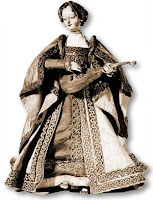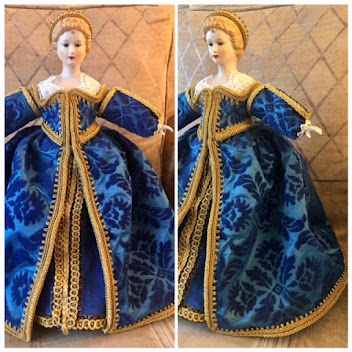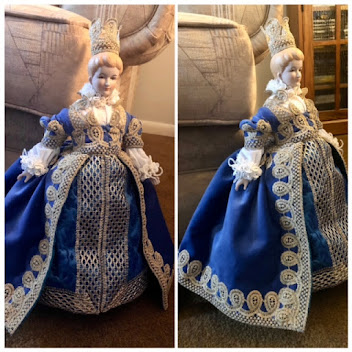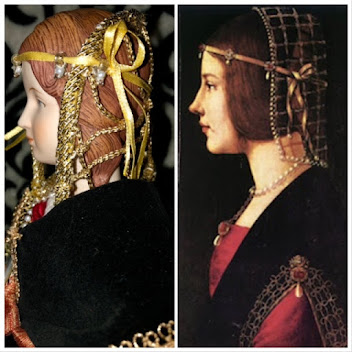Gianello Torriano 1501-1585. This clockmaker and mechanic made several working small android like machines that emulated people small movements. Mainly the looped actions were prayer, playing an instrument of some kind, along with head, foot and arm movements. All this could be programmed to follow set path and react to bumping a solid object. This made me think of other wind up toys and small clockwork like items. So it seems that the beginnings of this kind of small machine for entertainment is from late renaissance. It’s been an exciting discovery of information for my doll journey.
The particular one I was wanting to possibly recreate The Lute Player Lady. A woman like doll it is said to move with small tripping steps, strumming the lute with its right hand, and turning its head from right to left. It can advance in a straight line, or follow the path of a circle. She is wearing a golden colored silk velvet gown with scarlet ribbon overlaid with gold bobbin lace. This figure is 44cm tall which is about 17 inches in English system. Made by her creator in the late 1555-1558 for Charles V the Holy Roman Emperor at the end of his life. So this was created in a monastery in Spain, Gianello made amusements for the emperor in his later life. The lady is notably one of the first automatons.
Gianello is said to be credited with a monk automaton that strikes his chest and kisses a cross created in 1560. The so called Clockwork Prayer was made of wood and iron, 39 cm in height. A little over 15 1/3 inches in th English system. Driven by a key-wound spring, the monk walks in a square, striking his chest with his right arm, raising and lowering a small wooden cross and rosary in his left hand, turning and nodding his head, rolling his eyes, and mouthing silent obsequies. Every once in a while, he brings the cross to his lips and kisses it. Amazingly, after some four and a half centuries, the automaton remains in good working order. This is attributed to Gianello Torriano and is housed in the Smithsonian Institution in Washington D.C. this may be a future field trip.
Sadly the extant item doesn’t work. Attempted to see if there was a video of her on the internet to no avail. She is housed in the Kunstkammer of Kunsthistorisches Museum in Vienna. Though there is enough information on the way it moved and a picture of the inner mechanical workings it maybe possible to replicate. I am not good with machines though can easily can make the doll and all the outer decoration. Currently wondering if working some simple systems may allow it to work as noted. Researching the simple clockwork and see if I maybe able to test a few theories. In the meantime sharing this with my followers some interesting possibilities for future work.
Blessings to little Discoveries,
THL Marrin O’Kealy
Source 1: http://www.darkroastedblend.com/2015/01/amazing-automatons-robots-victorian.html?
m=1
Source 2: https://history-computer.com/Dreamers/Torriano.html










ReplyDeleteDo you know the material from which the lute was made?